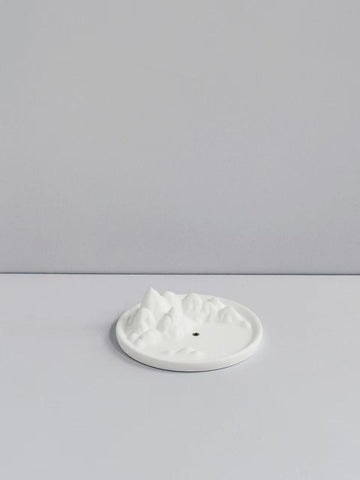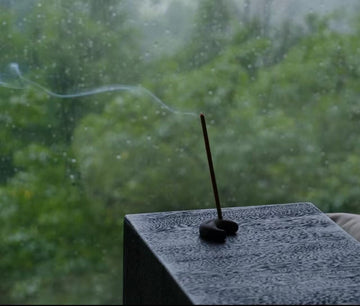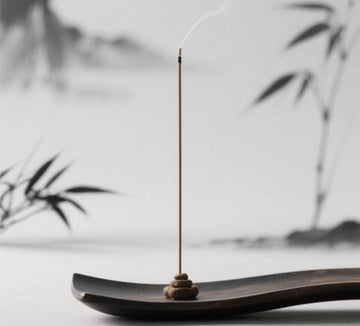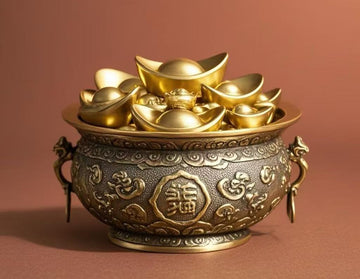Incense has accompanied human civilization for thousands of years. From the solemn rituals of ancient temples to the modern pursuit of mindfulness and tranquility, the question of when people burn incense is not merely about timing—it reflects a deeper rhythm of daily life, spiritual needs, and emotional well-being. Understanding the appropriate time to use incense, and more importantly, selecting the right type for each moment, allows us to harmonize our senses with the natural flow of the day. In this guide, we explore how burning incense in the morning, afternoon, and evening can elevate the quality of life, and how natural ingredients like sandalwood and agarwood play a unique role in this daily ritual.
Morning: Awakening the Mind with Sandalwood
The early hours of the day are a time of renewal. The sun rises, the world stirs, and the body and mind slowly awaken from rest. For centuries, incense has been burned in the morning not only as a spiritual offering but also as a means to invigorate one’s consciousness and set a positive tone for the hours ahead. Burning incense in the morning can help signal the brain that the day has begun, create a sacred or intentional space for meditation or prayer, and offer an aromatic alternative to stimulants like coffee.
From a sensory perspective, sandalwood-based incense is the ideal choice for this time of day. Known in traditional cultures for its calming yet uplifting properties, sandalwood emits a smooth, woody aroma that gently activates the mind without overwhelming it. Its scent is categorized as a “bright fragrance” or “明香” in classical Chinese incense theory, making it perfect for morning use. Sandalwood's clarity helps clear mental fog, inspire optimism, and enhance focus.
The ancient Chinese incense philosophy summarizes this well: “Early sandal, late agar.” This proverb points to the long-standing belief that sandalwood is best suited for mornings due to its invigorating energy and the way it spreads fragrance quickly through space. Compared to heavier scents that may feel too dense early in the day, sandalwood’s gentle intensity works harmoniously with the body’s natural cortisol spike in the early morning. For professionals, students, or spiritual practitioners, this makes sandalwood incense a perfect companion during early meditation, reading, or goal-setting rituals.
Afternoon: Recharging Energy with Natural Scents
As the day progresses into the afternoon, many people experience a natural dip in energy. The body's circadian rhythm signals a slowdown, often resulting in mental fatigue or emotional dullness. In modern times, this is the hour when caffeine is over-consumed or productivity slumps occur. Burning incense during this transitional period offers a healthier, more holistic way to recalibrate the body and mind.
Afternoon incense use is ideal for recharging one’s energy, refreshing the environment, and creating a break in monotony. A gentle, naturally fragrant incense can stimulate the parasympathetic nervous system, which is responsible for rest and digestion. Unlike synthetic air fresheners or perfumes, incense made from pure plant-based ingredients interacts with our olfactory system on a more primal, therapeutic level.
For this period, incense blends that include citrus peels, light florals, or green botanicals can work wonders. These elements provide subtle stimulation without overstimulation, encouraging alertness while preserving calm. For those who are working, burning a stick of incense mid-afternoon can clear stagnant air and create a moment of pause to recenter and refocus. In traditional Chinese tea culture, it is common to pair incense with tea tasting during this time, allowing both aroma and flavor to soothe and restore the spirit.
Importantly, only natural incense should be used. Products containing chemical fragrances may provide a superficial scent but often lead to headaches, allergic reactions, or disruption of indoor air quality. When selecting incense for this time of day, be sure to look for handmade, pure botanical products that are free from artificial additives. This is where brands like Memoricall excel, offering premium incense that is 100% natural and crafted with traditional methods.
Evening: Calming the Spirit with Agarwood
The evening hours signal a time of slowing down, reflection, and preparation for rest. The frantic pace of the day gives way to stillness, and incense becomes a powerful tool to aid in this emotional and physical transition. Burning incense in the evening is not merely about fragrance; it’s about creating an environment that supports relaxation, stress relief, and quality sleep.
This is where agarwood, also known as 沉香 or oud, becomes the centerpiece. Revered in both Eastern and Middle Eastern traditions, agarwood is a rare and valuable material formed when certain trees in the Aquilaria family produce a resin in response to damage or infection. Over time, this resin accumulates and matures, developing into one of the most complex and cherished scents in the world.
Unlike sandalwood’s bright and outward-reaching character, agarwood is known as a “dark fragrance” or “暗香.” It is subtle, deep, and multi-layered. Its aroma often unfolds slowly, creating a meditative space that invites introspection. Burning agarwood incense in the evening calms the nerves, stabilizes the emotions, and slows the heartbeat. It is especially effective when used during night meditation, yoga, or before sleep.
For those who struggle with insomnia, anxiety, or overthinking, incorporating agarwood incense into an evening routine can have a profound impact. Studies on olfactory stimulation suggest that exposure to natural aromatic compounds can influence brain waves, increasing alpha activity and facilitating a state of relaxed alertness, which is the precursor to restful sleep. Traditional Chinese medicine also emphasizes the use of agarwood for qi regulation and grounding—making it a natural remedy for modern stress.
The Importance of Natural Ingredients
Whether burning incense in the morning, afternoon, or evening, the choice of ingredients plays a pivotal role in determining the experience and outcome. Unfortunately, many commercially available incense sticks are made using synthetic fragrances, chemical binders, and even toxic fillers. These substances may not only distort the aroma but also pose health risks when burned indoors.
Natural incense, by contrast, is made from pure plant resins, wood powders, and herbal binders. These ingredients not only smell better but also interact harmoniously with the human body. They are less likely to cause irritation and are often used in traditional medicine and aromatherapy. Furthermore, handmade incense crafted in small batches—like those by Memoricall—carries a unique energy and craftsmanship that mass-produced items cannot replicate.
Natural incense also respects the environment. Many synthetic sticks release pollutants or microplastics when burned. Eco-conscious consumers now seek incense that is biodegradable, sustainably sourced, and packaged with minimal environmental impact. Choosing such incense is a small yet meaningful way to align daily rituals with broader values of health and sustainability.
Sandalwood vs Agarwood: What’s the Difference?
Understanding the distinction between sandalwood and agarwood is essential for anyone looking to use incense effectively throughout the day. Both are precious woods with deep cultural and spiritual significance, yet they differ significantly in origin, aroma, and function.
1. Origin and Formation
Sandalwood comes from the core wood of the sandal tree, particularly species like Santalum album (Indian sandalwood), Santalum spicatum (Australian sandalwood), or Santalum paniculatum (Hawaiian sandalwood). Its formation is straightforward: the older the tree, the richer the scent. The heartwood is harvested and then ground into powder or distilled into oil.
Agarwood, on the other hand, is far more elusive. It is not a naturally occurring material in healthy trees. Instead, it forms only when an Aquilaria tree becomes infected or wounded, prompting it to secrete resin as a defense mechanism. Over many years, this resin hardens and darkens into agarwood, also known as “wood of the gods.” This rare formation process makes it one of the most expensive raw materials in perfumery and incense.
2. Scent Profile and Usage
Sandalwood is described as bright, creamy, warm, and woody, with a linear and consistent scent. It projects strongly and fills a room quickly, making it ideal for alertness and focus.
Agarwood, in contrast, is subtle, musky, sweet, and sometimes spicy, often with complex top, middle, and base notes. Its aroma evolves slowly and reveals depth over time, inviting quietude and contemplation. Agarwood is not just smelled; it is experienced—a meditation in scent.
Because of these differences, the ancient saying “早檀晚沉” (early sandal, late agar) captures not just tradition, but an aromatic philosophy deeply rooted in time and mood.
Incense and the Return of Daily Rituals
As modern life becomes increasingly digital and chaotic, there is a quiet revival of interest in intentional daily rituals. Incense is at the heart of this movement. No longer confined to temples or tea rooms, incense is now used by artists, wellness seekers, and busy professionals to reintroduce rhythm into their lives.
Memoricall honors this tradition by creating incense aligned with the time of day. Inspired by ancient incense rituals, the brand plans to release specialized collections for morning, afternoon, and evening use. These products will blend traditional wisdom with modern aesthetics, allowing users to experience the same daily flow as the scholars, monks, and tea masters of old.
Whether preparing for a productive day, taking a reflective pause, or winding down into stillness, incense allows us to return to the senses—to breathe, observe, and reconnect with the present moment.
Conclusion
So, when do people burn incense? The answer lies not in a clock, but in the energy of the moment. Morning incense awakens the spirit, afternoon incense recharges the soul, and evening incense calms the heart. By choosing the right natural materials—like sandalwood for clarity and agarwood for peace—we can use incense not just as fragrance, but as a tool for transformation.
Incorporating incense into your daily life is a small but powerful act of care, mindfulness, and beauty. Explore the full range of handcrafted, time-honored incense at Memoricall and experience the ancient rhythm of scent for the modern age.









